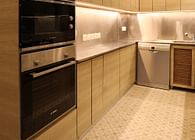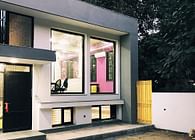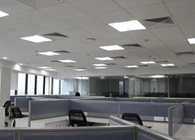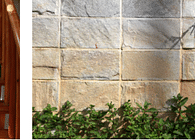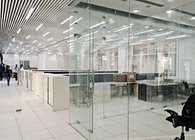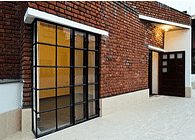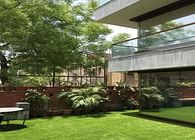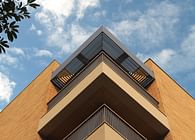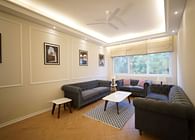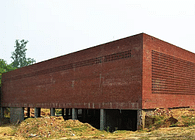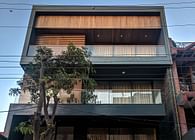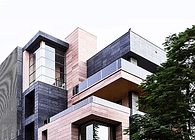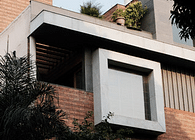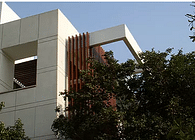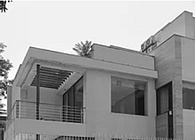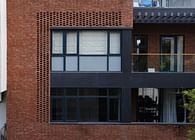
Cool grey glass is combined with a gradation of blue, grey, and white aluminum panels that seem to emerge with solidity from the ground, and eventually, dissipate into the horizon. The exposed ends of the framework peek out from behind the top of the finished cladding, not unlike the tassels of a carpet, proud of their necessity in the process.
The building is laid out to maximize the efficiency of manufacturing processes that are housed within. Pallets of fabric make their way down ramps to the storage areas in the basement, where they are cut and bunched into bundles, complete with accessories. These make their way to the upper floors, where lines of stitching machines produce the semi-finished product. The final touches of packaging, labeling, quality control, and despatch are handled on the ground floor. The office space dominates the first floor, with the largest areas allocated for the sampling section and a workspace for the designers. This workspace was designed as white space, a blank canvas to encourage creative freedom while reducing strain. A showroom and a few private offices line the perimeter, while a corridor provides the requisite access to the rear fire escape stair.
While the glass panels may appear randomly sprinkled, their positions are the result of interior daylighting requirements. The colors of the panels themselves have been chosen for better light absorption at lower levels, with higher levels of reflectivity close to the top of the building. A tubular aluminum frame supported on robust metal brackets underpins the facade. Diagonal cross-bracing support the glass and aluminum panels on the peripheries, creating the precise six-sided joints.
Status: Built
Location: New Delhi, IN
My Role: Principal Architect
